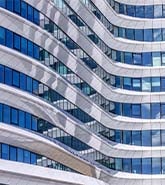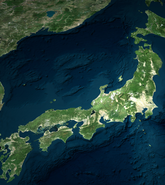Australia - October 15, 2018 RMS, the global risk modeling and analytics firm, today announces that Insurance Australia Group (IAG), a leading multinational insurer, has licensed the RMS High Definition New Zealand Earthquake Model.
The RMS High Definition (HD) New Zealand Earthquake model is the world’s first earthquake model to benefit from the RMS HD model simulation-based framework which models tens of thousands of realizations of future earthquake scenario losses. This strengthens IAG’s ability to perform granular risk quantification as well as assisting in strategic risk management decisions.
The RMS HD New Zealand Earthquake Model is the first to holistically consider losses due to ground shaking, liquefaction, landslide, tsunami and fire following earthquake as well as post-event loss amplification. The RMS HD New Zealand Earthquake Model incorporates important lessons learned from the 2010-2011 Canterbury Earthquake Sequence (CES). The Lyttelton Earthquake, in particular, caused widescale destruction, with building collapses in the Christchurch central business district, widespread liquefaction, and 185 fatalities. The CES resulted in an estimated $33-38 billion NZD ($22.8-26.2 billion USD) in overall insured losses, making this the second-largest insured loss from earthquake ever.
The RMS model was created in collaboration with local experts, scientific agencies, and insurers. Site-specific soil and groundwater data at thousands of locations in Christchurch served as the basis for a comprehensive re-design of the RMS liquefaction methodology. The simulated earthquake set uses the latest research from the national seismic hazard maps and includes complex event ruptures similar to the 2016 Kaikoura Earthquake. The modeled losses were validated against billions of dollars in CES claims data, to accurately capture the performance of New Zealand specific structures.
Dr. Philip Conway, natural peril specialist at Insurance Australia Group, commented: “Following the significant Canterbury and Kaikoura earthquakes, New Zealand now has one of the most technically advanced views of earthquake risk globally. Multivariate models such as the RMS HD platform leverage this large body of science which supports IAG’s own internal modeling. IAG has had a long relationship with RMS and we welcome its independent view of risk which provides an important contribution to reinsurance discussions as well as satisfying regulatory requirements. The flexibility afforded by the new platform represents a step change in discrete consideration of earthquake mechanisms.”
Dr. Pierre Wiart, managing director for RMS Australia, added: “By including features like high-resolution liquefaction and probabilistic tsunami in our High Definition New Zealand Earthquake Model, sophisticated clients like IAG, who understand the nuance required to optimize their risk management strategies, are better equipped with a holistic tool to meet their business needs. IAG’s selection of the RMS model allows them to better understand how earthquake risk in New Zealand could impact their diverse portfolio and demonstrates the value of this model for risk management in New Zealand.”
For more information on HD New Zealand Earthquake Model, click here






